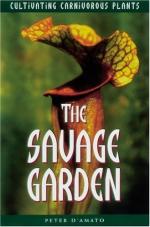|
This section contains 1,109 words (approx. 4 pages at 300 words per page) |

|
Plants that trap and digest tiny animals have fascinated people for centuries. It was known by 1790 that sundews, pitcher plants, and the Venus's-flytrap could catch insects. This interest led Thomas Jefferson to collect Venus'sflytraps near Charleston, South Carolina, for study. A century later, Charles Darwin referred to the Venus's-flytrap as one of the most wonderful plants in the world. More recently, certain adventurous, twentieth-century Hollywood movies depicted man-eating plants as inhabiting mysterious tropical jungles. Carnivorous plants, in fact, are relatively small and do not live in dark swamps and jungles, and the largest animal ever found trapped in one of the plants was a small rat. Carnivorous plants catch mostly insects, and hence are often referred to as insectivorous plants.
Carnivorous plants are defined as plants that attract, catch, digest, and absorb the body juices of animal prey (referred to as the carnivorous syndrome). The major...
|
This section contains 1,109 words (approx. 4 pages at 300 words per page) |

|


